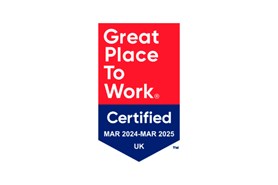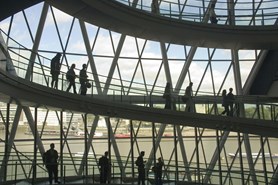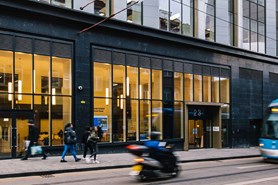On balance, AI seems likely to do what technology has always done: reshape work and remove the need for some occupations while creating many more and raising productivity.
Never has an advancement in computing power been discussed by so many, in such a short space of time, as Artificial Intelligence (AI).
Some warn we’re entering the age of The Terminator, with Skynet taking over the world.
Let me reassure you that we’ve been here before. I expect that money and the domestication of animals were discussed in the same apocalyptic terms as AI is today.
Steam power, the internal combustion engine, electricity, and the internet were also viewed as harbingers of doom.
Those of us charged with creating the built environment tend to be sanguine about change. Some things change, some things don’t. A Roman bricklayer observing his counterpart on a modern UK building site would see many similarities to the way they worked on Hadrian’s mega project in the 120s AD. A wall is a wall at the end of the day.
There’s always work to do
“Modernise or die,” said Mark Farmer in his 2016 and 2021 UK reports, but even two short years ago, when he considered how things had moved on since the 2016 report, he did not see the impact that machine learning could have on the way we design, project manage, and build.
The main fear is that tech will replace human workers. And it’s true that from the earliest agricultural machines to today’s self-checkout zones, machines do take over routine, physical processes, shifting humans toward less structured work where knowledge and interaction play a greater role.
AI already shows real capacity for tasks such as answering complex questions, writing competent reports, and tackling exams, suggesting that it, too, will take over some jobs.
But predictions of mass job losses often underestimate the new job opportunities technology creates. Part of this is because most new technologies work well with and complement labour, increasing capacity and productivity.
We still have accountants
Calculators and spreadsheets didn’t, for instance, make accountants redundant. Instead, accountants were freed from the data recording and computational tasks that were the essence of early accountancy, allowing a shift to more complex undertakings.
Just as slide rules and arithmetical formulas were replaced for quantity surveyors by other necessary skillsets valued by clients. Consultancies like my own evolved into multi-disciplinary organisations offering project management, facilities management, and capital asset control, as well as more traditional skills. The evolution of tech also results in the creation of entirely new roles, too. Cars needed mechanics, TVs required writers, the computer has driven a vast expansion in IT jobs, for example.
But are we ready to adapt? Deloitte’s latest “State of AI in the Enterprise” report notes that while 94% of business leaders see AI as being important to their organisation’s success, only 27% think their organisation has policies and processes needed to fully harness it.
Why it’s hard to automate construction
That’s not to say that the benefits aren’t already being felt. The chief executive of Octopus Energy in the UK said last month that AI was doing the work of 250 customer service workers and writing emails that delivered 80% customer satisfaction, well above the 65% achieved by skilled, trained people.
I believe aspects of construction management will be disrupted by machine learning, but not at the speed some predict.
One reason construction seems impervious to tech disruption is the sheer diversity of jobs in it, and the diversity of tasks within those jobs, not all of which are equally replaceable by machines.
Automation may just alter the task composition of jobs, rather than reducing their overall number. Most sectors are keen to embrace this change and, in the latest CFO survey, respondents said they expected to see a wave of AI-related capex driving UK productivity.
On balance, AI seems likely to do what technology has always done: reshape work and remove the need for some occupations while creating many more and raising productivity.
It will take time, however. It took decades for personal computers to affect measured US productivity. In 1987, at the height of the adoption of personal computer technology pioneered by Apple and promoted by Microsoft, the US economist and Nobel laureate, Robert Solow, famously lamented: “You can see the computer age everywhere but in the productivity statistics.”

Richard Steer
Chairman
- richard.steer@gleeds.com
- +44 (0)207 631 7000

Julian Barlow
PR Consultant
- corporate.comms@gleeds.com
- +44 (0)1628 857979



